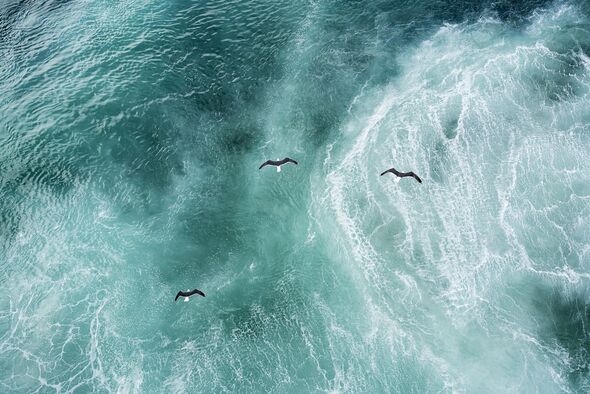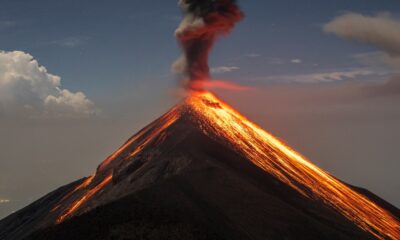Science
New Study Warns of Potential ‘Little Ice Age’ as Ocean Current Weakens

Climate change is threatening a critical ocean current, raising concerns about a potential return to conditions similar to the historical ‘Little Ice Age’. A new study from the University of Exeter indicates that the North Atlantic Subpolar Gyre, a system of ocean currents located south of Greenland, is approaching a destabilization point that could have significant climatic repercussions.
Researchers examined the annual records of ocean conditions through the shell layers of quahog clams and dog cockles. These marine organisms, some of which can live for over 500 years, provide valuable insights into long-term patterns in the Atlantic Ocean’s currents. The findings reveal that the North Atlantic Subpolar Gyre has been losing stability since the 1950s and is now nearing a critical threshold that could lead to drastic climate changes.
The North Atlantic Subpolar Gyre plays a vital role in transporting heat from the tropics to the North Atlantic. It is part of the larger Atlantic Meridional Overturning Circulation (AMOC), which helps regulate temperatures in both Europe and North America. As the gyre’s movement slows, Europe could experience conditions reminiscent of the last Little Ice Age, a period from approximately 1300 to 1850 characterized by a notable drop in average temperatures of around 3.6°F (2°C). During this time, rivers froze, and agricultural yields suffered dramatically.
According to Dr. Beatriz Arellano Nava, a lecturer in physical oceanography at the University of Exeter, the implications of these findings are alarming. She stated, “Our results provide independent evidence that the North Atlantic has lost stability, suggesting that a tipping point could be approaching, although it remains uncertain when this threshold might be reached.”
The study highlights the potential for more extreme weather events, particularly in Europe, as well as alterations to global precipitation patterns due to the weakening of the subpolar gyre. Dr. Arellano Nava emphasized the importance of further research to fully understand the impacts of such a significant shift in ocean currents.
While climate conditions today differ substantially from those of the 13th century, the possibility of another Little Ice Age remains uncertain. The research illustrates the ongoing climate challenges that may lie ahead, including harsher winters and more intense storms, which could have profound effects on societies and ecosystems.
This study serves as a crucial reminder of the interconnectedness of ocean currents and climate behaviors, urging immediate attention to climate change’s broader implications on global weather patterns and stability.
-

 World3 days ago
World3 days agoCoronation Street’s Shocking Murder Twist Reveals Family Secrets
-

 Entertainment4 months ago
Entertainment4 months agoKate Garraway Sells £2 Million Home Amid Financial Struggles
-

 Entertainment3 months ago
Entertainment3 months agoAnn Ming Reflects on ITV’s ‘I Fought the Law’ Drama
-

 Health3 months ago
Health3 months agoKatie Price Faces New Health Concerns After Cancer Symptoms Resurface
-

 Entertainment3 weeks ago
Entertainment3 weeks agoCoronation Street Fans React as Todd Faces Heartbreaking Choice
-

 World4 weeks ago
World4 weeks agoBailey Announces Heartbreaking Split from Rebecca After Reunion
-

 Entertainment6 days ago
Entertainment6 days agoTwo Stars Evicted from I’m A Celebrity Just Days Before Finale
-

 World6 days ago
World6 days agoKevin Sinfield Exceeds Fundraising Goal Ahead of Final Marathons
-

 Entertainment3 months ago
Entertainment3 months agoCoronation Street’s Carl Webster Faces Trouble with New Affairs
-

 Entertainment3 months ago
Entertainment3 months agoWhere is Tinder Swindler Simon Leviev? Latest Updates Revealed
-

 Entertainment4 months ago
Entertainment4 months agoMarkiplier Addresses AI Controversy During Livestream Response
-

 Science2 months ago
Science2 months agoBrian Cox Addresses Claims of Alien Probe in 3I/ATLAS Discovery



















